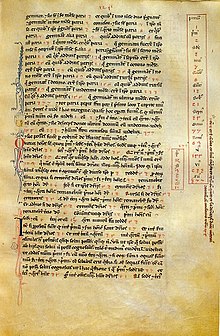
The Liber Abaci or Liber Abbaci[1] (Latin for "The Book of Calculation") was a 1202 Latin work on arithmetic by Leonardo of Pisa, posthumously known as Fibonacci. It is primarily famous for introducing both base-10 positional notation and the symbols known as Arabic numerals in Europe.
- ^ "Fibonacci's Liber Abaci (Book of Calculation)", The University of Utah, 13 December 2009, retrieved 2018-11-27